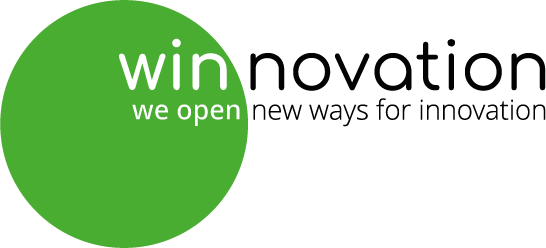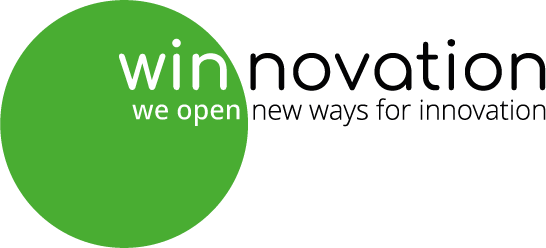
Regulatory Sandboxes:
An Opportunity for Sustainable Building
Abstract
For the Federal Ministry for Climate Action, Environment, Energy, Mobility, Innovation and Technology (BMK) in Austria, winnovation investigated how regulatory sandboxes can enable affordable sustainable building and living. Regulatory sandboxes are tools for anticipatory regulation and regulatory learning.
We have established four types of regulatory sandboxes that can help regulators and construction companies invigorate the stagnating construction sector by navigating the complex regulatory landscape for green building and renovation. We pose thematic proposals that reflect the need for regulatory sandboxes in the Austrian sustainable construction sector.
In future, the implementation of regulatory sandboxes in the Austrian construction sector could help to significantly accelerate the introduction of technological, process-related and social innovations, thus supporting the achievement of sustainability goals.
The final report can be found here (in German)
Client
Involement
Consortium lead
Used Methods
Crowdsourcing
Need assessment
Co-creation
Data triangulation and pattern recognition
Deskresearch
Partners
The Challenge
The construction sector in Austria directly contributes 10% to the country’s greenhouse gas emissions (GHG). What’s more is that the direct and indirect contribution of buildings and built infrastructure is between 36 and 40% of energy-related GHG emissions, according to the United Nations Environment Programme.
Buildings must therefore become more environmentally friendly to mitigate climate change.
However, the construction of new housing has decidedly slowed down in recent years due to inflation and skyrocketing material and building prices. This trend appears to continue in the foreseeable future, even leading to stagnation within the construction sector.
On top of that, existing laws and standards in the construction sector are made for conventional construction. This makes building new and sustainable more complex and expensive than it needs to be.
In addition to increased innovation efforts to reduce the carbon footprint, closed cycles and alternative energy concepts, a correspondingly agile regulatory environment is necessary for innovation and progress in the areas of planning, energy use, materials and material flows and business model, as they can enable affordable and easy-to-implement sustainable construction.
In a pioneering study in Austria, we identified and detailed the need for regulatory sandboxes for ecologically sustainable and climate-effective projects in the construction sector. Led by winnovation, an interdisciplinary consortium of four partners explored which areas require regulatory sandboxes and where the greatest environmental and societal impacts could be achieved.
To ensure robust findings, we engaged around 200 professionals from sustainable architecture and construction through interviews, co-creation formats, and an online crowdsourcing process. Using data triangulation and pattern recognition, we consolidated insights from innovative users, experts, and stakeholders across planning, approval procedures, construction, operation, renovation, and recycling, verifying needs across multiple dimensions.
The Project
What are Regulatory Sandboxes
Regulatory sandboxes are a novel tool to achieve legal certainty for innovations within a certain timeframe. This means that the regulatory authorities learn what they should (not) regulate in the future, while participating innovators learn how they can comply with the regulations.
This is important, as in construction and refurbishment, there is a high density of standards with very different regulators involved, where standards are often interpreted differently or formulated differently (for example, between federal states).
These sandboxes can be quickly implemented with the involvement of multiple regulators, leading to several recommendations for research projects, specific sandbox implementation, increased awareness, and regular exchanges among regulators. They can also help embed experimental clauses in laws and guidelines, although, as we will see, only a few topics require statutory experimentation clauses.
Regulatory Sandboxes are used in connection with the use of data, new technologies such as artificial intelligence (AI), blockchain and distributed ledger technologies (DLT) or the innovative use of existing technologies.
The implementation of regulatory sandboxes is never a completely regulation-free zone. This means that even under the conditions of a regulatory sandbox, consumers, health and the environment must be protected as required by law.
The Results
Four regulatory sandboxes were defined, of which the first two types are considered “classics” that have become established as a basis in the field of sandboxes. The latter two have been developed by us.
-
The core innovation typically has a high degree of technological novelty, with its legal categorisation undecided upon entering the sandbox. During the sandbox period, companies receive exemptions from specific legal requirements, enabled by existing or newly amended experimental clauses. The sandbox concludes by either integrating the innovation into existing legal frameworks or creating new laws.
-
This type of regulatory sandbox operates within the current legal framework, as no exemptions or experimentation clauses exist or will be implemented. The innovation involved is less novel compared to type 1, requiring precise legal categorisation and interpretation. Close, often informal, cooperation between the authority and the innovator is essential during the sandbox period.
-
This type of regulatory sandbox does not require experimental clauses or exemptions. Instead, it focuses on targeted coordination and cooperation between various regulators to better utilize existing legal flexibility. It applies to two main scenarios: coordinated regulatory approaches within a project involving different authorities, and regulatory learning and experience transfer to implement innovations broadly and uniformly. The key to this sandbox type is the willingness of regulators to collaborate and leverage existing legal room for interpretation.
-
Type 4 regulatory sandboxes are needed when regulatory tensions exist, but solutions are unclear. These sandboxes involve regulators and experts collaboratively exploring the interdependencies of regulations and simulating potential solutions. This process allows for the analysis of influencing factors and effects, leading to proposed regulatory changes or incentives. The foundation for this type is the presence of complex, interrelated regulatory issues.
Thematic Proposals for Utilising Regulatory Sandboxes
We have formulated thematic proposals to tackle some of the challenges in the renewable construction sector using the new sandboxes tool - from timber construction and the reduction of land consumption to the use of artificial intelligence.
The proposals can be utilised in the following:
Minimise soil consumption and soil sealing
Promote multi-storey timber construction
Increase thermal refurbishment
Enable affordable ecological building
Promote ecological materials and construction methods
Promote renewable energy and energy efficiency
Promote the circular economy
Enable sustainability of construction processes and buildings through AI
The project has highlighted the necessity of regulatory sandboxes in the heavily regulated construction sector for sustainable construction and refurbishment, providing policymakers with evidence of the need for experimentation to support decarbonization:
Regulatory Initiatives: Sustainable building requires new regulatory approaches to become widely accepted and implemented.
Safety Standards: High safety standards do not necessarily conflict with regulatory learning, but comfort-related requirements often hinder sustainable innovation.
Quick Implementation: Regulatory sandboxes can be implemented rapidly without extensive preparation, provided that regulators are involved and committed to regulatory learning.
Key Findings
Recommendations
For regulatory sandboxes to thrive in the green construction and refurbishment sector, we suggest the following implementation strategies:
Research Projects: Tender research projects to design regulatory sandboxes, aiding regulatory authorities in planning and decision-making.
Specific Sandboxes: Implement specific regulatory sandboxes with support from the Federal Ministry for Climate Action, ensuring regulatory authority participation.
Awareness: Increase awareness of regulatory sandboxes through targeted communication.
Regular Exchanges: Promote regular exchanges between regulators and support with a working group on sustainable construction.
Experimental Clauses: Embed experimental clauses in federal laws, OIB guidelines, and state building regulations.
Final Webinar on Regulatory Sandboxes for Sustainable Construction
To round up the study, winnovation hosted a webinar with all its authors, presenting its results to the public for the first time (in German).

Let’s work together
office@winnovation.at
Linke Wienzeile 42
Vienna, 1060












